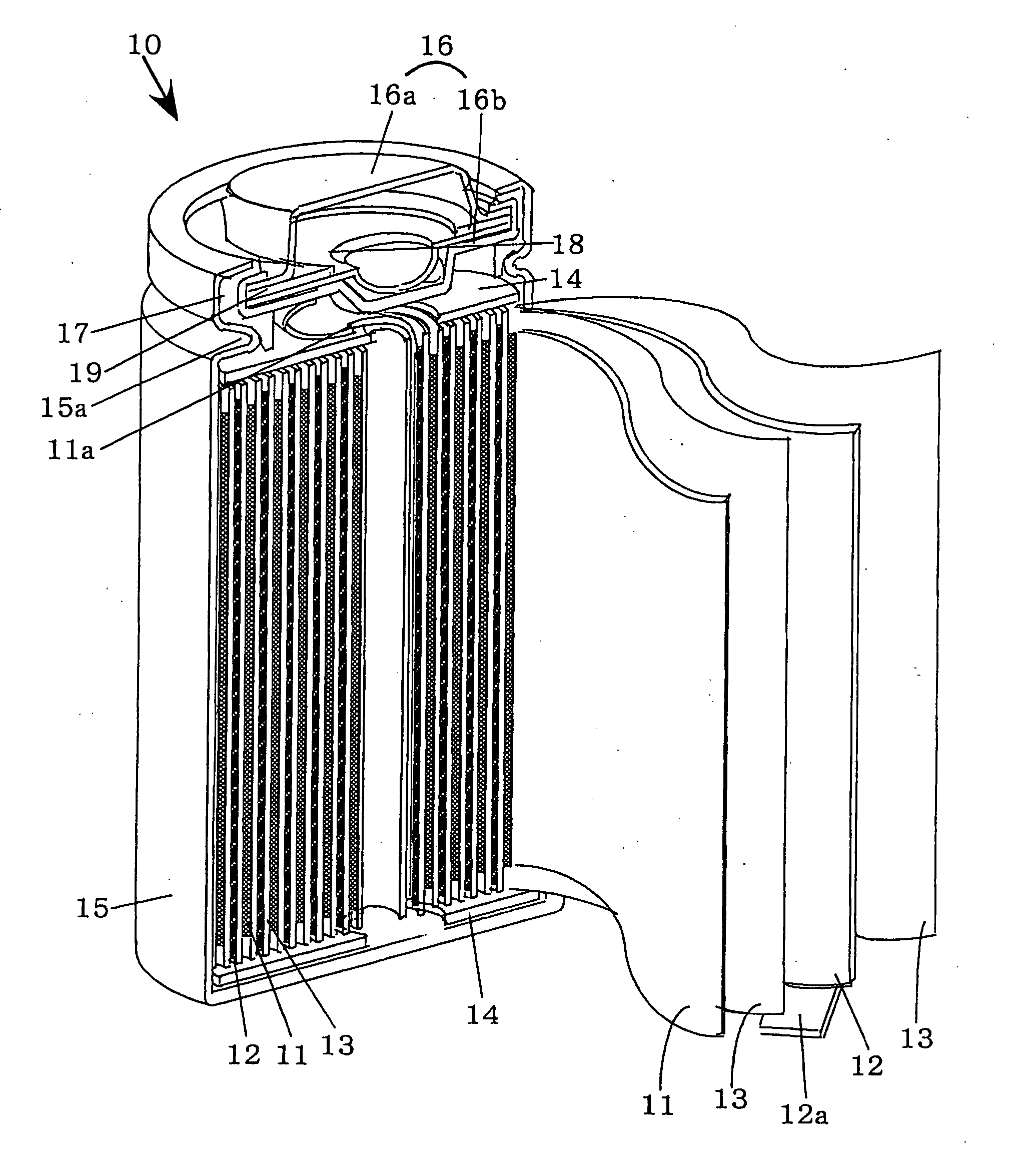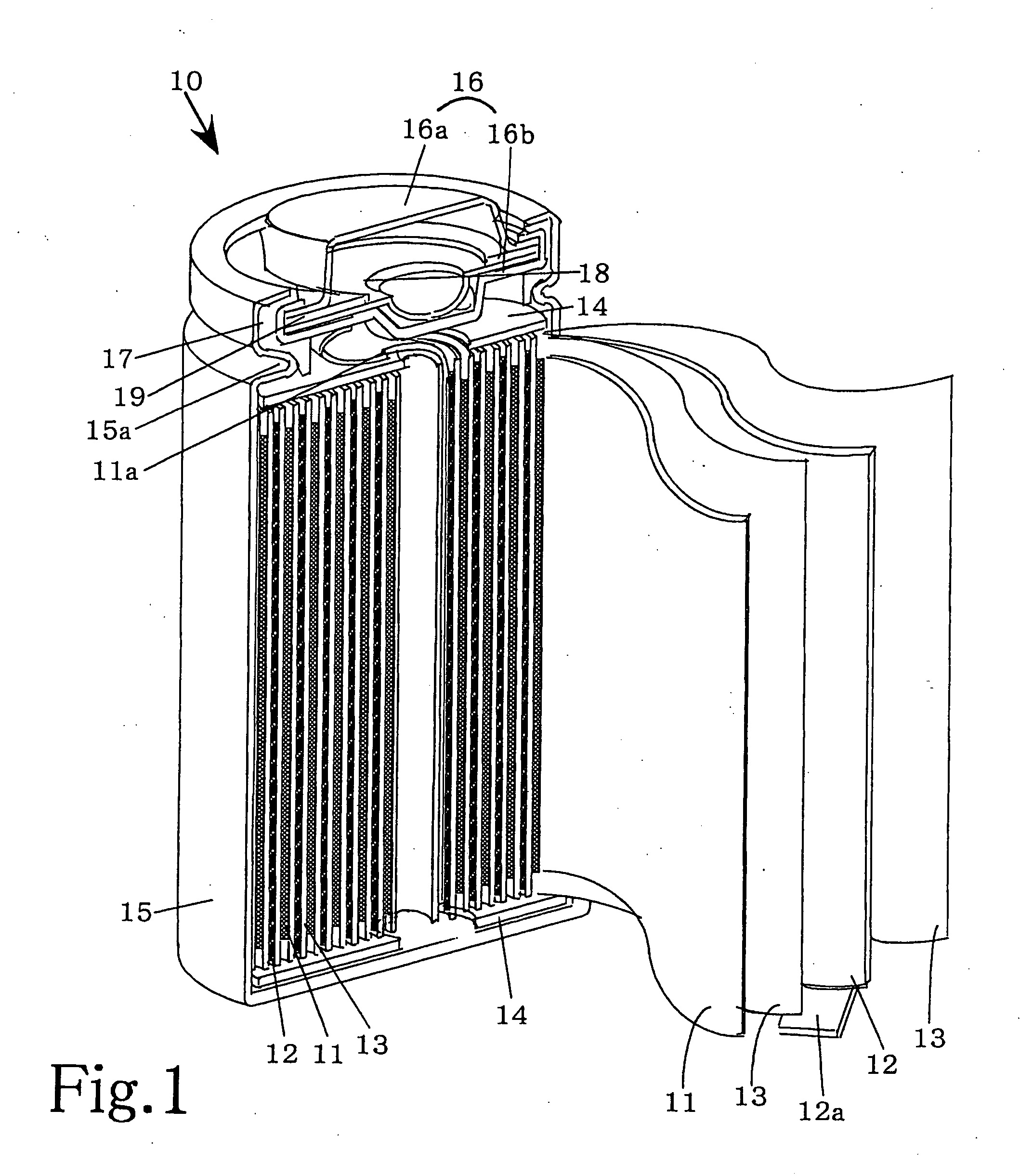Non-aqueous electrolyte battery
a technology of electrolyte battery and lithium secondary battery, which is applied in the direction of non-aqueous electrolyte cells, cell components, electrochemical generators, etc., can solve the problems of reducing the charging efficiency of lithium secondary batteries, unreversible battery capacity, and undesirable affecting the character of batteries, so as to prevent the reduction of the initial charging efficiency of batteries
- Summary
- Abstract
- Description
- Claims
- Application Information
AI Technical Summary
Benefits of technology
Problems solved by technology
Method used
Image
Examples
Embodiment Construction
[0017] While the present invention will be described with reference to its preferred embodiments, it is not in any way restricted to such embodiments, which may be modified or changed appropriately without departing from the gist of the invention. FIG. 1 is a partially cut away perspective view, which schematically shows the main portion of a non-aqueous electrolyte battery according to the invention in the state cut along the longitudinal direction.
[0018] 1. Preparation of the Positive Electrode
[0019] To prepare a positive electrode mix, lithium cobaltate (LiCoO2) powder acting as the positive electrode active substance, acetylene black as a conductive agent and a fluorocarbon resin as binder are mixed at a mass ratio of 90:5:5. N-methyl-2-pyrrolidone (NMP) is then added and mixed to the positive electrode mix to form a slurry, which is thereafter coated on both surfaces of a positive electrode collector made of aluminum foil by means of the doctor blade method to form a positive...
PUM
| Property | Measurement | Unit |
|---|---|---|
| specific surface area | aaaaa | aaaaa |
| specific surface area | aaaaa | aaaaa |
| specific surface area | aaaaa | aaaaa |
Abstract
Description
Claims
Application Information
 Login to View More
Login to View More - R&D Engineer
- R&D Manager
- IP Professional
- Industry Leading Data Capabilities
- Powerful AI technology
- Patent DNA Extraction
Browse by: Latest US Patents, China's latest patents, Technical Efficacy Thesaurus, Application Domain, Technology Topic, Popular Technical Reports.
© 2024 PatSnap. All rights reserved.Legal|Privacy policy|Modern Slavery Act Transparency Statement|Sitemap|About US| Contact US: help@patsnap.com









